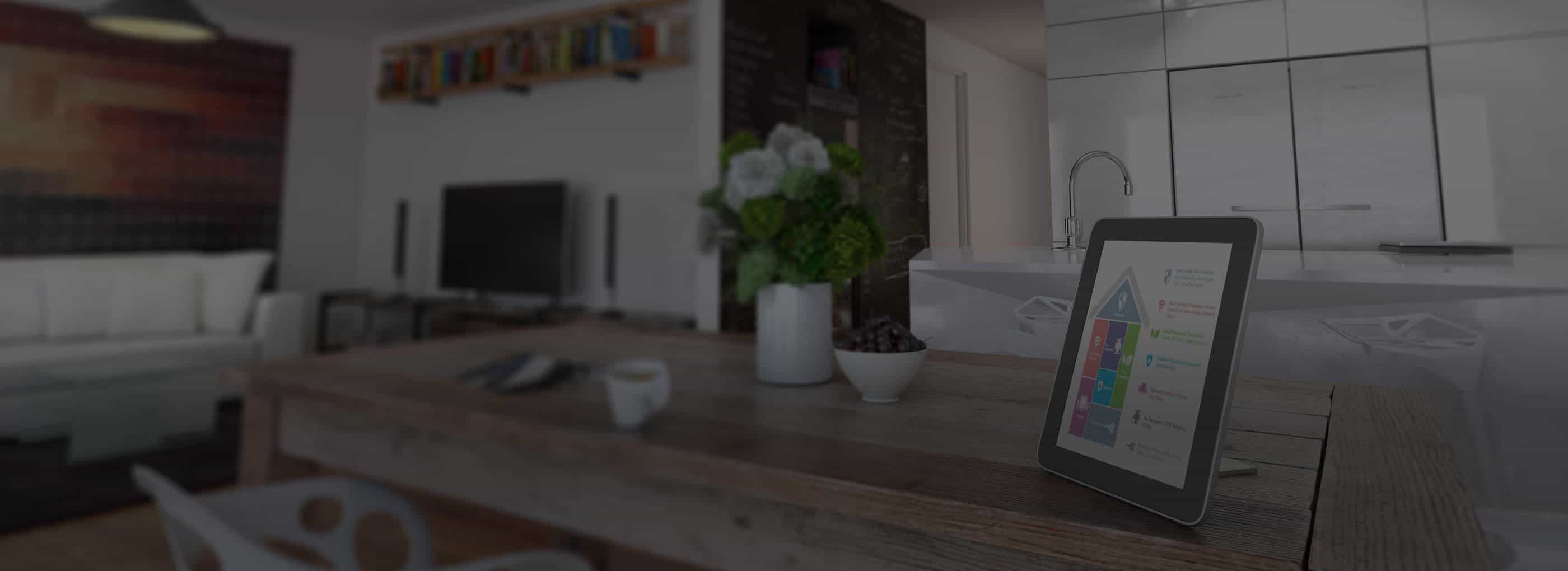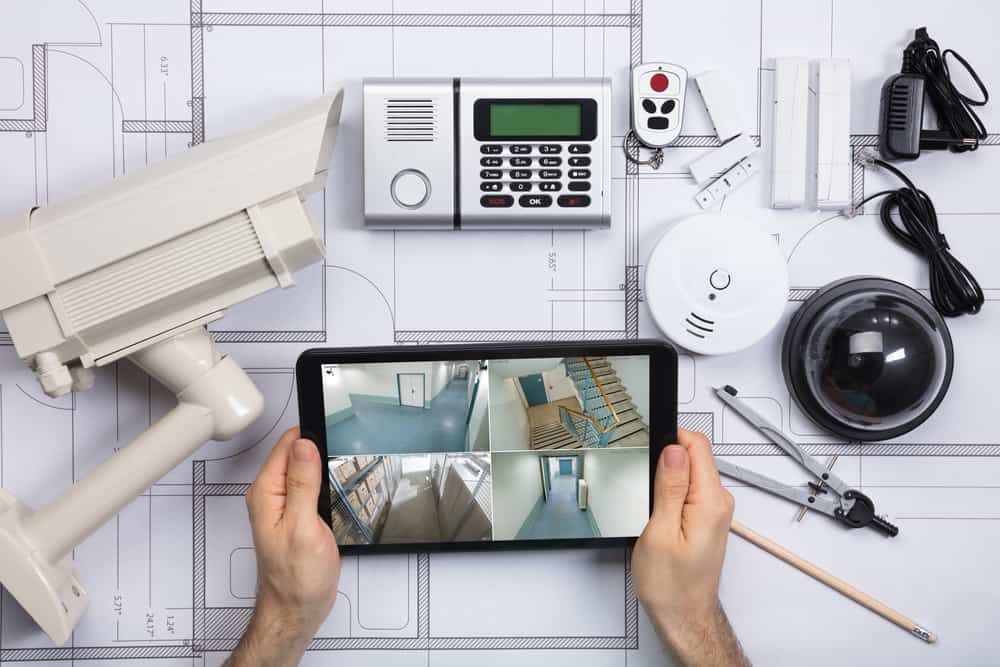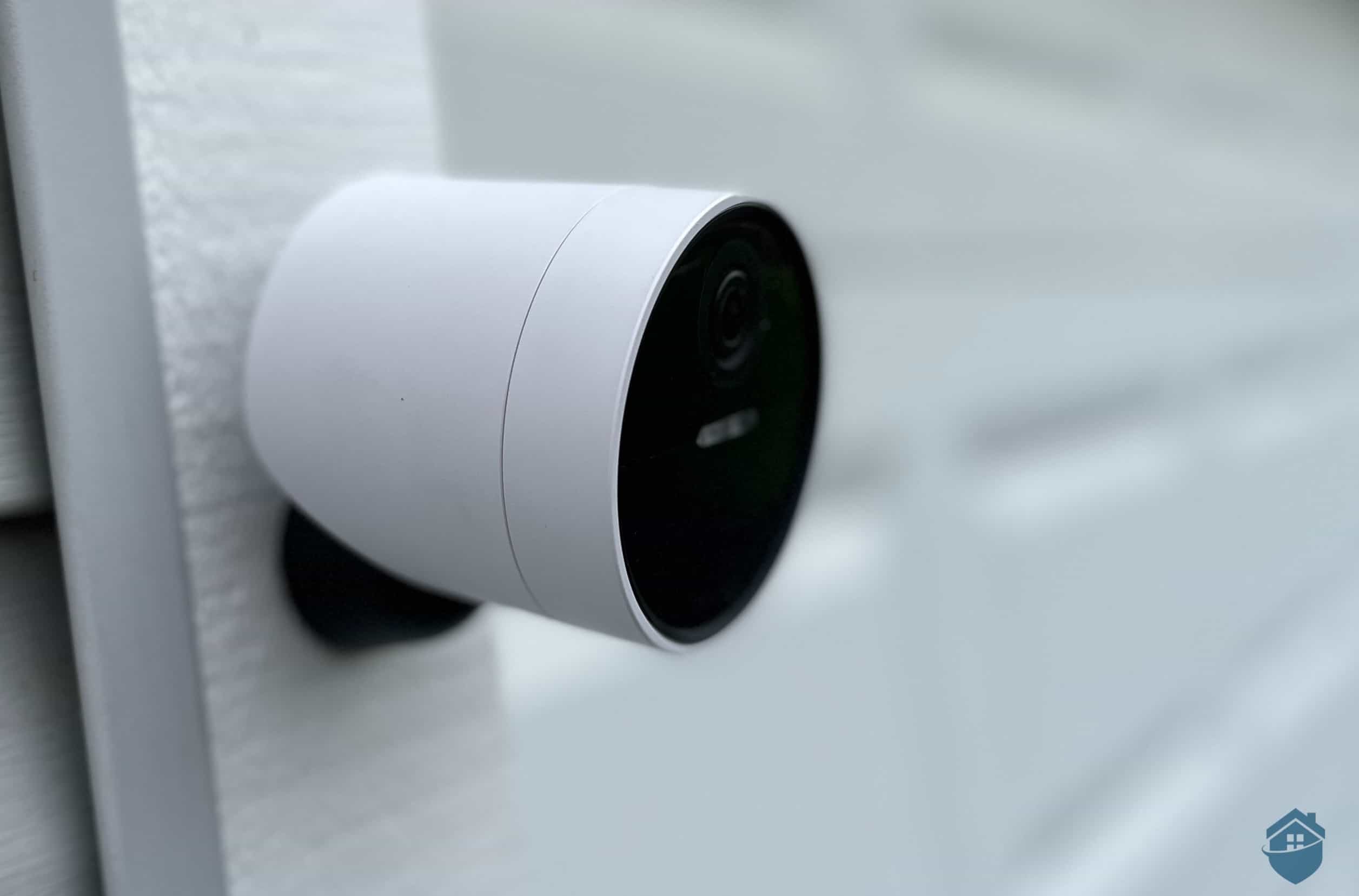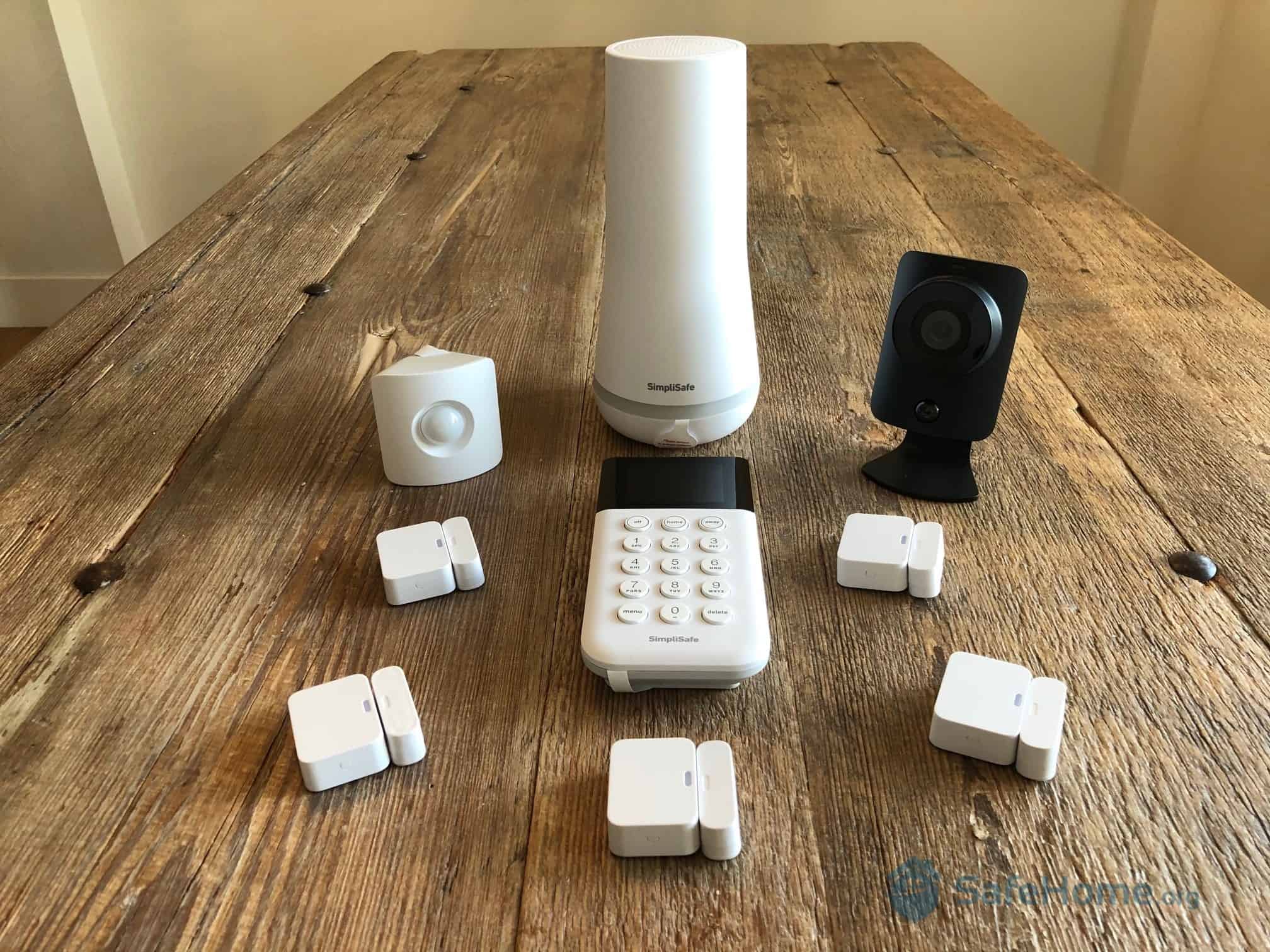Finding a safe neighborhood in a safe part of town is at the top of everyone’s safe home checklist. If you’ve managed to achieve that, congrats. You’ve already done the heavy “home security” lifting. But that doesn’t mean you’re done.
The safest places in the U.S. (i.e., the places with the least violent crime) still have property crime. Those property crime rates are often unsettlingly high in comparison to the violent crime numbers. Just consider Great Falls, Virginia, “the safest suburb in the U.S.,” per fintech company SmartAsset, with just seven violent crimes per 100,000 residents.1 Burglaries and other property crime in Great Falls still clock in at 495, or more than 70 times the violent crime rate.
Bottom line? Securing your home against crime means more than being lucky enough to afford a house in a safe neighborhood. It also means taking some basic steps to fortify your home against intruders. In this guide, we’ll show you six ways to transform your new home into a prowler-proof castle.
Pro Tip:Home invasions and burglaries aren’t the same thing. Burglars don’t want you around when they break in. Home invaders prefer it, which makes home invasions much scarier and more dangerous.
How does your home measure up when it comes to security? Take this quiz to see how you score, and get recommendation to protect your home.
Locks
Keys are at the top of our new home security checklist because rekeying (new keys, same locks) is probably the first thing we do when we move into a new place. Recalibrating your locks may be as far as you need to go. But if you’re moving into an older home, check the state of the locks themselves before you call the locksmith to make a new set of keys. No deadbolts? You may want to take this opportunity to install them.
If your new home does need new locks, it might be time to invest in a quality smart lock. There are all sorts of smart locks out there — from lightweight, keypadless units that slip over your existing deadbolt, like the new August Wi-Fi Smart Lock, to cheaper, Bluetooth models that come with their own deadbolt, like the budget Wyze Lock Bolt.
Did You Know? With a ghost key and a simple twist of the wrist, a seasoned “lock bumper” can penetrate the world’s most secure residential deadbolts. So when you’re shopping for your next smart lock, look for locks like the Kwikset Halo Touch that are “bump-resistant.”
Entry Points
You know the old saying, “Your home is your castle”? Well, even castles need strong doors and windows. That’s how the bad guys get in 100 percent of the time, after all.
To secure your entry points, start with the basics: front, back, and side doors. Remember, thieves will often knock at the front door and then sneak around back. If any of your doors show signs of forced entry, you should consider replacing them. Also, look for little things like pet doors that might fit a Joe Pesci-sized intruder. Thieves will use them if they can.
If you’ve inherited a home with hardwired security equipment, you’ve got a head start. But be sure to check out the existing setup. The best hardwired security systems use door, window, and glass break sensors, not just cameras and motion sensors, to keep prowlers out. Not sure how window sensors work? Here’s a complete guide to window alarms.
FYI: In 2018, the “Doggy Door” Burglar, Alan Alvarado, pinched over $100,000 in valuables from an unsuspecting homeowner in Houston by sneaking in through the pet door. The only mistake Alvarado made was looking straight at a high-res outdoor security camera for a few seconds before he squeezed himself in. The footage was good enough for local police to make a positive ID.2
Blinds
You’ve just moved into a new house. Who has time to think about the drapes? You’ve got a hundred boxes lying around, and there’s stuff all over the floor.
Hold on a second. Boxes everywhere and stuff all over the floor? That’s a chum bucket for a casing prowler. Even when you’ve finished unpacking, thieves are always on the lookout for intel they can use to get a bead on your schedules and stealable goods. An unobstructed view of everything in your home, day and night, is nothing less than an invitation to theft.
>> Related: Do Fake Signs Prevent Break-Ins?
That’s why — after locks, doors, and windows — curtains and blinds are the next step in fortifying your home against break-ins. Don’t have the budget for expensive drapery? You don’t necessarily need it. Window film is a cheaper alternative that will get the job done.
Pro Tip: Turning on the lights via timers will usually dupe burglars when you’re out of town — as long as you don’t go overboard. That’s one of our five favorite tricks for fooling holiday thieves.
Security System
You’ve got sturdy locks and doors, you’ve covered your windows, and you live in a safe neighborhood. Do you really need to install an alarm? The answer I find myself giving folks who ask is usually “why wouldn’t you?” Our favorite DIY security systems take less than an hour to install and can be as minimal as front and back door sensors and a hub. I’ve basically just described SimpliSafe’s budget security package, by the way, which costs less than 170 bucks.
That’s really all you need to start out: two tiny sensors that alert you when you’ve got an unexpected visitor. You arm them at night and when you’re out, which is enough to send the average thief packing. Case closed.
Of course, there’s a whole lot more you can do with a first-rate home security system. You can invest in an alarm with smart home integrations, environmental sensors, and a direct pipeline to first responders — an ADT security package in a nutshell. Here’s a quick breakdown of the major home security options you can choose from, some pros and cons, and a ballpark idea of their costs.
| Type of security system | Pros and cons | Price |
|---|---|---|
| Monitored |
Pro: You don’t have to contact first responders when there’s an emergency; your security provider does it for you. Cons: You pay a monthly fee for the service. You could get billed for false alarms. |
$30 per month and up, on top of equipment |
| Unmonitored |
Pro: There is no monthly fee to pay. Con: You have to contact 911 if there’s an emergency on your property. |
No fee on top of equipment |
| DIY |
Pro: Installation is quick and easy; there are no fees. Con: There is no guarantee you’ve installed your system properly. |
$170 and up; monitoring is optional |
| Pro installation (hardwired) |
Pro: The one-stop shop approach to home security covers all the bases: installation, maintenance, and monitoring. Con: Professionally installed, hardwired security systems are significantly more expensive than DIY solutions. |
$500 and up, plus monthly monitoring |
Did You Know? Nearly 40 million U.S. homeowners have installed home security systems to date. According to a recent home security study we conducted, over a quarter of respondents said they’d installed their alarms to protect their children.
Security Cameras
Earlier, I said that a functional home security system consists of a hub and a couple of sensors. It is. But imagine the actual drill. A prowler is at your back door. If he gets inside, you’ll know but you won’t see what kind of visitor you’re dealing with. If he fails, you won’t have any record of the attempt, other than a busted door frame. Pretty scary either way, right?
Add a couple of best-in-class security cameras to your home safety arsenal and you’ll eliminate both of those problems. Expensive? Nope. A top-of-the-line wireless 4K Lorex Indoor/Outdoor Spotlight Camera costs under $100 right now. That little guy comes with a built-in siren and a blazing bright light that will scare the bejesus out of the average crook — almost a stand-alone security system. But you can swipe up cheaper quality cameras for as little as $36. So, no, you don’t need cameras. But considering how little the actual investment is and how much you gain by having them, it would be a shame to leave them off your home security checklist.
FYI: Most burglaries aren’t random events. Sixty-five percent of break-ins are committed by acquaintances, per the Department of Justice.3
Environmental Sensors (Smoke and CO)
By the time you’re ready to move into your new home, your home inspection is likely ancient history. So, as soon as you’re inside, recheck the batteries on your smoke and carbon monoxide (CO) alarms. Remember, you can’t see, taste, smell, or feel a CO leak, and those leaks can kill in minutes. If you’re not sure your installation is up to snuff, take a moment to review our CO monitor installation guide.
Pro Tip: Just one inch of flood water can wreak more than $27,000 worth of damage to your home.4 If you live in an area with a moderate to high flooding risk, add a water leak sensor to your safe home checklist. Water leak sensors work just like smoke alarms, but with moisture. The minute they detect an unusual amount in your basement, you get an alert.
New-Home Security Checklist
Information overload? Here’s a roundup of the security factors we’ve discussed so far and the actions we recommend.
| Safe-home factor | What we recommend |
|---|---|
| Neighborhood safety | Look for areas with low violent crime and low property crime. |
| Entry points | Place sensors on front, back, and side doors. For extra protection, also cover your first-floor windows. |
| Locks | Install deadbolts. Consider a smart lock for your front door. |
| Drapery | Don’t leave your windows bare! Thieves love naked glass. |
| Security system | Install a hub and entryway sensors, minimum. |
| Security cameras | Place cameras at entrances. |
| Environmental sensors | Install smoke and CO sensors. If you live in a flood-prone area, put a water leak sensor in the basement. |
Pro Tip: We don’t bring any old Craigslist babysitters into our homes to watch our children. We get recommendations from family and friends, meet potential candidates, and choose the best one. Take the same precautions with your moving company. These people have access to everything you own, literally.
Bottom Line
There’s nothing more exhilarating than moving into a new home you love in a neighborhood where you feel safe. You’ve made a considerable investment to get there. Now it’s time to add the finishing touches. It won’t cost much.
Start with an overhaul of your locks and a basic security system (hub and sensors). You can pick up a good alarm for less than 200 bucks these days. Add a pair of 2K (minimum) security cameras, which go for as little as $36 a piece. Finally, recharge your smoke and CO alarms with a pack of fresh AA batteries. That’s about it. As long as you’ve got something covering your windows — blinds, drapes, or window film — it’s very unlikely your new home will ever become a property crime stat.
FAQs
- Should I rekey my locks when I move into a new house?
Yes, you should. If rekeying isn’t something you feel comfortable doing by yourself, you can always call a locksmith.
- How do I know if my doors need replacing?
Probably, they don’t. But if your doors, or door frames, show significant cracks or damage, it might be time for new ones.
- Is it OK to use the existing security system in a home I moved into, or should I buy my own?
Yes, it’s OK. Most likely, if the previous owners left it, the system you inherited is hardwired. You’ll obviously want to change the codes and update the settings. Some security systems, like ADT and Vivint, also require monitoring plans.
- Do I need security cameras and a burglar alarm?
Not necessarily, but we recommend it. Most cameras don’t sound an alarm by themselves. And most alarms don’t have eyes (save for abode). Combining the two gives you total peace of mind.
- How do blinds or curtains make my home safer?
Thieves often case property before they strike. If they have a choice between a home where they can see who’s home and what’s inside (no blinds) and a home that gives them none of that information, most thieves will choose the first option.
- Are CO detectors mandatory everywhere in the U.S.?
No. Despite the fact that over 10,000 people visit the ER every year from CO poisoning, only 38 states require CO detectors in private





